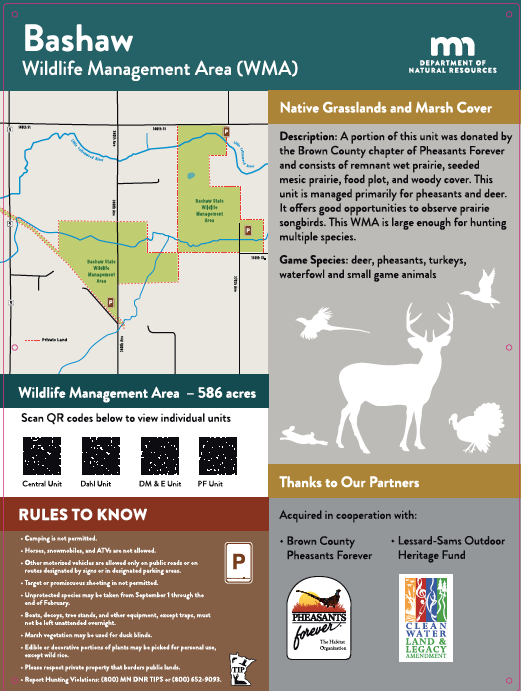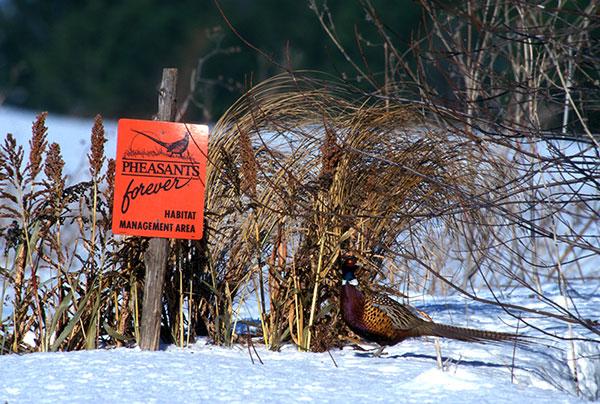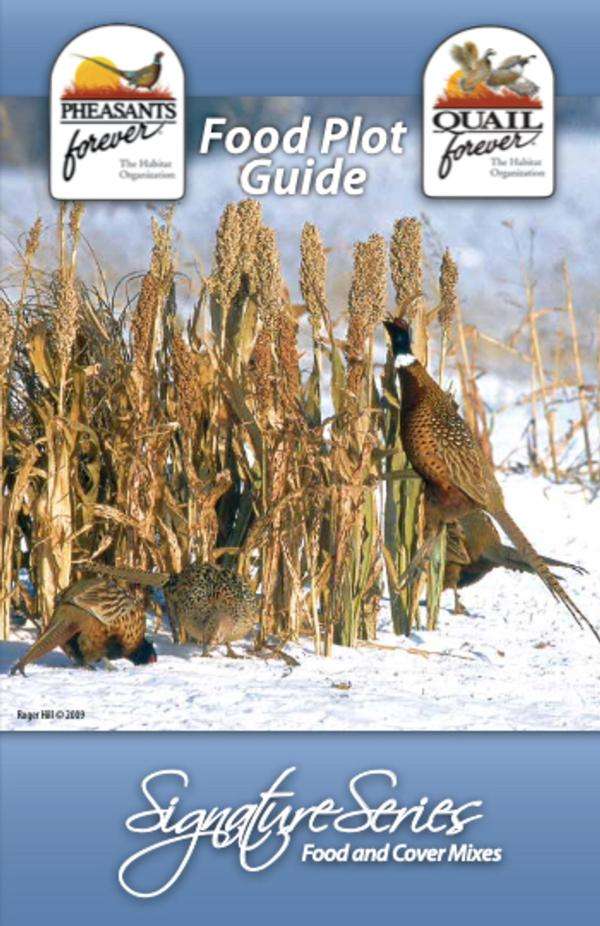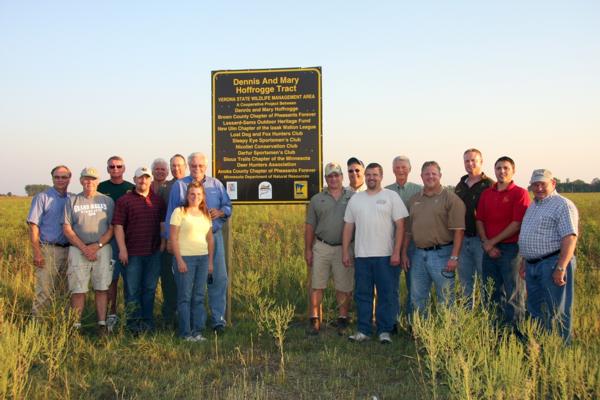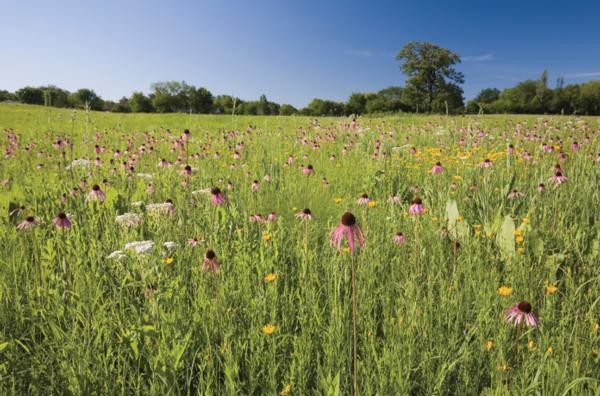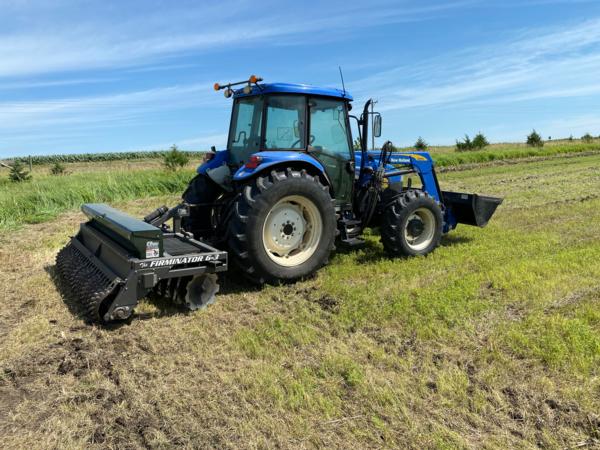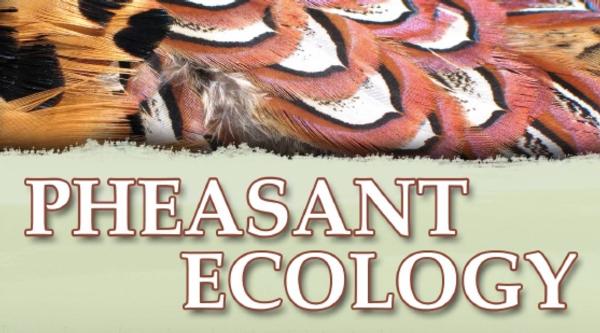Habitat
Local Habitat Efforts
Brown County Pheasants Forever's (BCPF) members are truly passionate about creating, preserving and restoring habitat that benefits pheasants, quail and other upland wildlife. This unique model empowers local chapters with the responsibility to determine how 100 percent of their locally-raised conservation funds will be spent.
Whether it's through improving habitat, informing the public about land management or educating future generations of hunting enthusiasts, conservation is the underlying principle in all we do at the grassroots level.
BCPF is part of the MN DNR's Adopt-a-WMA program. We have adopted all of the approximately 34 WMAs in the county. Come join us for a future WMA Habitat Day.
Food Plots for Better Habitat
Looking to help wildlife? Plat a food plot. In real estate its about location and location. Same with food plots. They should be near wintering cover and away from roads, structures, etc.
Food plots should be designed with size, location, and type of crop to be planted for the soil.
- Design: Should be at least 3 acres. 5 acres and larger is better. Plan for crop rotation so that you can minimize impute costs like fertilizer. The first step is to get a soil sample of the earth so you know what the best seed and fertilizer requirements might be. Without this step you are wasting your money and time.
- Location: As close to a wintering source as you can get. For deer and turkeys near woody cover is fine. But, for pheasants closer to willow shrubs or cattail sloughs are best. Not near tall large tress. These are predator roosts. As well these food plots should not be near roads.
- Crops: This is a very broad area. The best is to plant something that will provide a food source for the whole winter. This can be tough to do if only planting a small food source. Best is to plant for the location and wildlife you are trying to support. Sorghum & millet mix is great for pheasants.
Pheasants Forever has food plot seeds under its "Signature Series" for all you basic needs. As well in Brown County we have local seed sources. See the "Links" page a list of local suppliers.
This is a much better plan than trying to feed pheasants in the winter. You will have a much better survival rate.
Need more help? Reach out to us and we can assist your needs.
Pheasants Forever Food Plot Seed Guide
Looking for food plot seed. Check out the PF Signature Series food plot seed.
Pheasants Forever Signature Series Food Plot Planting Guide
Looking to plant Pheasants Forever "Signature Series" Food Plots Seed? Use the following guide to help you get the most out of your efforts. Remember to get a soil sample at your food plot location prior to using this guide. Soil samples can be done through University of MN Ag Dept Extension or at a local farmers coop. They are anywhere from $20-40/sample.
Local Chapter Projects
Every year the Brown County Pheasants Forever has on going projects throughout the community. With our proceeds from fundraising and donations from community leaders, we are fortunate enough to give back, putting all our money in the ground to preserve habitat throughout our region. If you know of a project or would like to learn more about how to help in the effort to preserve your local habitats, please feel free to contact us with any questions.
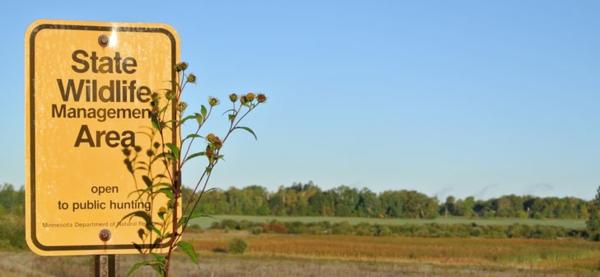
Pheasants Forever Works to Improve Habitat on WMA's
Brown County Pheasants Forever (BCPF) recently joined and is a fully active member in the MN Department of Natural Resources (DNR) “Adopt-a-WMA” (Wildlife Management Area) Program.
Brown County is blessed with over 35 (4600+ acres) WMA/WPAs for all to enjoy. It's your public lands.
Each year we will plan specific dates or “Events” and use our resources to make our public lands a better place for all to enjoy. Some of these activities are:
- Manage and build better habitat on the WMAs through food plots and establishing better wildlife habitat. Doing this will provide better wintering cover and food sources for the wildlife.
- Restoring signs and property boundary markers.
- Establishing better parking areas.
- Removing noxious trees and weeds.
- Planting new winter cover and food source trees and shrubs.
- Planting and maintaining food plots on the WMAs.
- Cleaning up trash in the ditches and areas where people dump things.
To keep up on the latest “Event” and if you want to come join us. See the “Event” tab or www.browncountypf.org/events/.
BCPF is not only dedicated not only to acquiring additional property, but also enhancing existing WMAs. None of this work would be possible without your support.
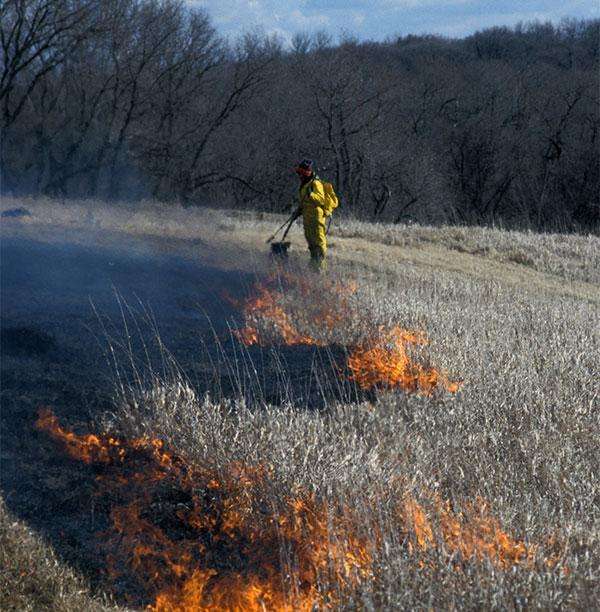
Preserving our Natural Resources
How Can You Help!
Creating, restoring, and maintaining habitat is a constant battle. We invite you to join the Brown County Pheasants Forever of Pheasants Forever in its quest to ensure a country rich in natural resources and long on people willing to work to preserve them. After all, natural resources - pheasants, quail, and other wildlife, plus the land, air, and water on which they live - are our greatest resources.
Farmers & Land Owners - Enroll marginal lands in CRP/WRP or other conservation programs. Many programs are available to land owners and you can seek guidance from the Brown County FSA or NRCS offices in Sleepy Eye.
Pheasants Forever's Members - Continue to donate where you can so Brown County PF in conjunction with other authorities can purchase lands for habitat and support other wildlife projects. Some of these projects are: Controlled Burns; Seeding and Plantings; Water Restoration; etc. Pheasants Forever's members are truly passionate about conservation and creating, preserving and restoring habitat that benefits pheasants, quail and other wildlife. That's why Pheasants Forever provides the most efficient conservation model of any organization. PF's unique model empowers local chapters with the responsibility to determine how 100 percent of their locally-raised conservation funds will be spent. Whether it's through improving habitat, informing the public about land management or educating future generations of hunting enthusiasts, conservation is the underlying principle in all we do at the grassroots level of our chapters all the way to Washington, D.C. when we fight for strong conservation policy.
Creating, restoring and maintaining habitat is a constant battle. We invite you to join Pheasants Forever in our quest to ensure a country rich in natural resources and long on people willing to work to preserve them. After all, natural resources - pheasants, quail and other wildlife and the land, air and water on which they live - are our greatest resources.
Thinking about ‘Pollinator Habitat’ plantings, the collection of plants highlighted in this video should be on the top of your list when designing seeding mixtures. They will provide floral benefits throughout the entire growing season, provide a wide range of flower types, are all readily available and will produce benefits for a wide range of wildlife. The secondary message with this Habitat Tip is that this is the perfect time of the year to be developing seeding mixtures and habitat plans to be implemented next spring. Putting together a management plan now that will be implemented next spring and summer is a great strategy.
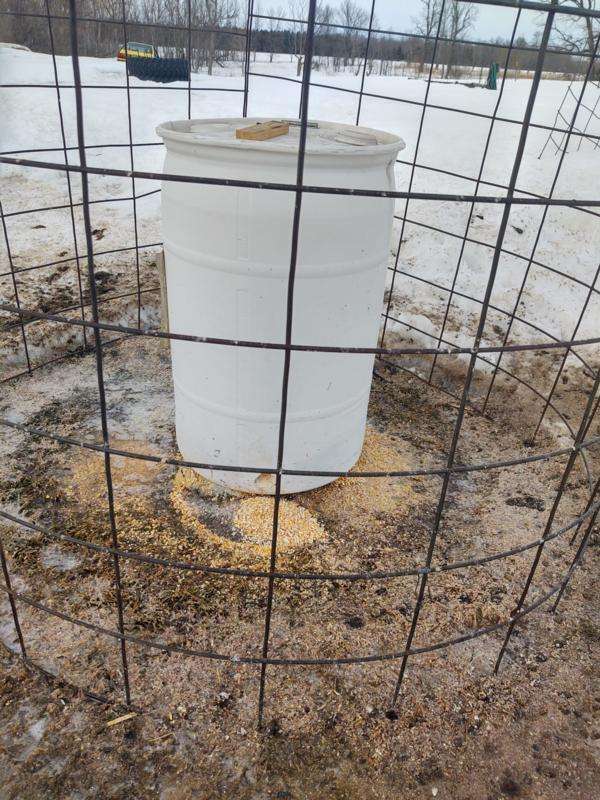
Should I Feed the Pheasants in the Winter?
During normal winters providing feed like corn; sorghum; sun flowers seeds; etc. is not needed. Let me repeat. "You don't have to feed wild pheasants for the most part". But if you still want to feed pheasants, please follow this outline so you provide the best possible returns on your investment of time and money.
- Food Plots – The best thing you could really to help pheasants is plant a food plot of at least 3-5 acres. It should as well be somewhat close to pheasant wintering cover like cattails or willow patches. The wintering cover should ideally be more than 5 acres. You don't want the birds to travel too far. Additionally, plant food that can help in providing cover and not get blown in and buried by snow. Such as sorghums and milo or blends for food plots like the "Signature Series or Food Plot Seeds". See pfhabitatstore.com/store/ for more details.
- Build the Right Feeder – You need to provide the right type of feeder to feed pheasants and not deer. Follow these steps and see the following articles on building a feed. See https://www.mnquailforever.org/.../build-a-simple-winter... and https://www.carvercountypheasantsforever.org/.../feeding.../ .
- Feeders need to be placed near or within a short distance to wintering cover. It is key so the pheasants can feed and then get out of danger when done. Do not place the feeder close to a road. Also, given snow and other consideration like how to I keep the feeder filled? Do not just put feed on the ground. Build a proper feeder to get the feed off the ground and out of the snow. The best feed is whole kernel corn or whole grains. Cracked corn holds moisture often in feeders and not the best for feeders.
- Feeders attract predators. Your feeder needs to keep out coyotes and a means of escape for the pheasants. More pheasants are lost to predators than die of winter weather.
- You need to build a feeder to keep out the deer (Note: deer should be fed hay and not corn in the winter) and other animals as best as possible. Therefore, we like the plans in the above links to help in this area. One other way is to use cattle fencing. "Cattle-Panel" fencing comes in 16 feet long by 4 feet section. The panels have holes in them about 6 x 8 inches on the lower part of the panel. Upper part of the panel has narrower holes. Holes are big enough for a pheasant to crawl through, but a coyote or deer can't get through easily. Note: If you are in a CWD region, all the more reason to keep the deer out of the feeder as well. Two panels are all you need to surround a feeder. You build a square or triangle with the panels.
- Once You Start, You Can't Stop – Repeat …. "Once You Start, You Can't Stop" feeding. If you do plan on feeding pheasants, you should only start around February 1st or so. Pheasants will survive well until that time, unless unusual winter. They have ways of finding food sources. After you start feeding you need to continue until the ground is exposed from snow. If you stop at any time prior to this, you will create a real problem for the pheasants. Many will die and not survive. The birds will become dependent on your food. Check your feeder at least every third day. Note: Do not throw feed near roads. If you do the outcomes are usually bad for pheasants. Several of the pheasants will be killed by cars or eating by predators.
Anyone interested in feeding pheasants, please reach out to the Board directly.
Pheasant Habitat Emphasis and Development Areas as outlined by MN DNR Overview
Jeff Zajac of the MN DNR presented the following overview at 2017 Pheasant Fest on how they are impacting and are focused on Pheasant habitat and development areas. Read the full overview to see the many things you can be part of in this effort.
MN Seed Mixes
Looking to get a turnkey operation for established native prairie grasses... Look no more. See FDC Enterprises.
See the following link for pricing: http://www.pfwebsites.org/chapter/browncountypforg/files/MNSeedMixSellSheet2017_02.14.17 .pdf
MN Buffer Initiative
Governor Mark Dayton’s new landmark buffer initiative was recently signed into law, designating an estimated 110,000 acres of land for water quality buffer strips statewide. The law establishes new perennial vegetation buffers of up to 50 feet along rivers, streams, and ditches that will help filter out phosphorus, nitrogen, and sediment. The new law provides flexibility and financial support for landowners to install and maintain buffers, and boost compliance with buffer laws across Minnesota. (See MN DNR site for full details).
Why is this important?
A new Minnesota Pollution Control Agency study found that few southwest Minnesota waters meet swimmable, fishable standards.
The Buffer Initiative web page and the information contained here is a collaboration with the Minnesota Board of Water and Soil Resources and the Minnesota Department of Natural Resource. The state departments of Agriculture and the Pollution Control Agency were also instrumental in formulating this initiative, a process that involved consultation with stakeholder groups, counties and other local governments.
S.D. Conservation Digest Article
Travis Runia of the SD Game, Fish & Parks wrote a great article on Pheasant Habitit in 2010-2011. If you are looking for a comprehensive overview on how best to use your land for Pheasnts - Read This!
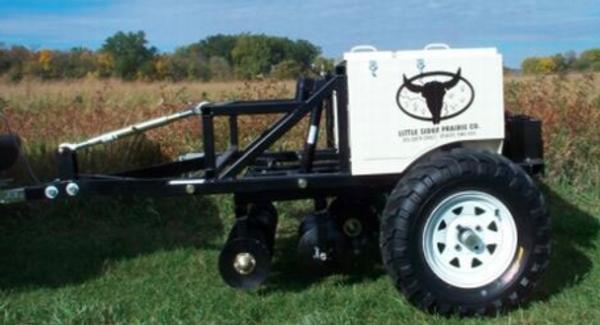
Dew Drop Drill Planter
Anyone in need of a small planter for your habitat project? We have one available from the DNR. You will need to reserve it. It is a Dew Drop ATV type pull planter. Contact one of the Board Members to arrange to reserve this planter.

